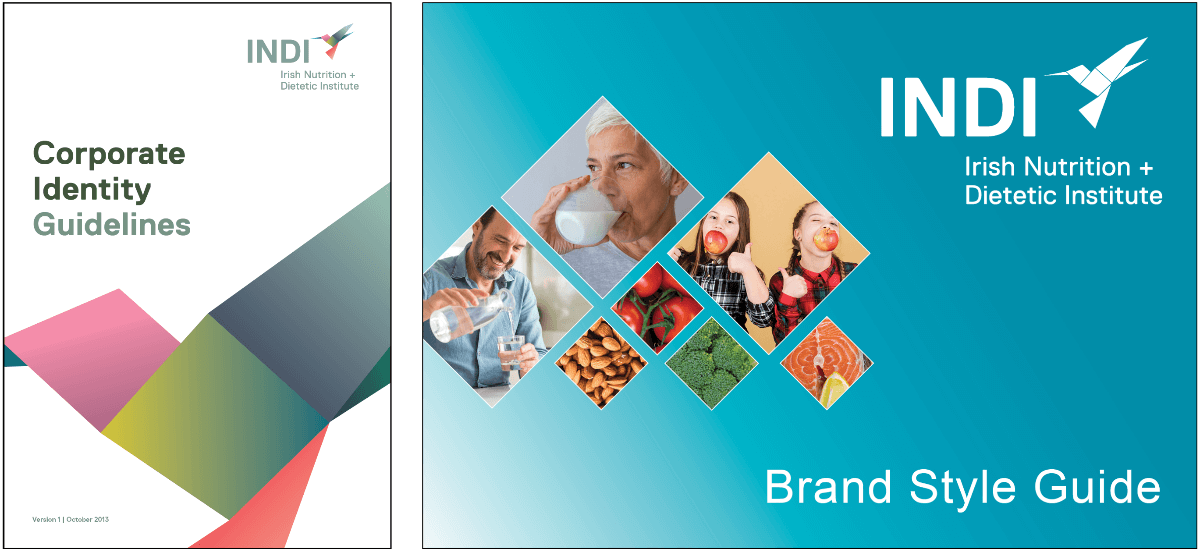|
I’m a mother of two human beings but I also feel like a mother of quite a few brand identity designs! One such ‘baby’ of mine is the Norwegian loyalty card 'trumf', which was launched in 1996. It’s hugely successful, with over 2 million members. In a small country with less than 5.5 million people, that is quite something. But as for the branding, well as you can see here, it has evolved since I left for Ireland... (My original design is the one to the left.) Times change, consumer interests change, culture changes, businesses change, and your brand will at some stage have to change too. Perhaps your business is looking to attract a new group of people? Expanding internationally? Or maybe your business has merged or acquired? Could it be that after many years of being in business, your brand has become too complicated? Does your branding accurately tell your brand story? A successful rebranding involves overhauling a company’s goals, message and culture. Sometimes it involves changing a name. And most often it involves changing a logo. The world’s largest operating system, Android, updated its visual identity this month to better connect the brand with Google. What Jason Fournier (director of Android Consumer Brand Management) wrote about it resonated with me: “Each time we overhaul our branding, we evaluate not only changing needs, but also future goals.” However, if you want to rebrand just because your brand identity looks old and outdated, then a subtle tweak to refresh it might be all you need. One such example is this recent work I did for the Irish Nutrition and Dietetic Institute. (My evolved design is the one to the right.) Whatever your business may need, why don’t you get in touch with me to discuss?
Times change, consumer interests change, culture changes, businesses change, and your brand will at some stage have to change too.
If you look closely at logos for the likes of Coke or Google you will see that they keep refreshing their image. It might just be subtle tweaks but it happens surprisingly often. Old Spice didn’t change its logo, it changed the experience. To catch up with the changing market who found them rather stale (they have been around since 1937), they completed a full rebrand with new packaging, clever ads and smart use of social media. In only one short year following the rebrand, their sales increased by more than 100%. A successful rebranding involves overhauling a company’s goals, message and culture. Sometimes it involves changing a name. And most often it involves changing a logo. What does your brand need? Your brand identity looks old and outdated. If you have a well-established brand you need to do a proper audience research first. You might find people love your classic brand and a subtle tweak will do the job. Your business is looking to attract a new group of people. Your brand should always speak to the people you are trying to reach, and if your branding is not primed to help you connect with the target audience you are after, then rebranding can be the solution. Your brand has become too complicated. As a business grows it usually develops or acquire various products and services. A new business might start off as one thing, but over the course of time it could have transformed into something else. Transform this confused brand clutter into a unified brand. Your customers have started to look elsewhere. If your business has lost touch with what is important to your audience, rebranding might be what you need, to make it wanted and understood again. Your business is expanding internationally. Rebrand to adapt your brand to fit different languages if your brand name is not appealing to cultures worldwide. Your brand doesn’t fit the ‘online’ world. If your brand was developed before the ‘digital’ age you might need to simplify your logo and branding elements to make it work as well on screens as it does on printed materials. Your brand identity was done in a rush. Often newly established companies throw together a logo and some short-sighted branding elements just to get started. Sometimes it works. Most often it doesn’t. Your brand identity looks rather similar to your competitors. Your brand identity must represent your business and be easily identified with your industry but if it has become a “me too” version of your competitor, rebrand to claim your space again. Your business has merged or acquired. The way your business is perceived by those it serves should always align with the way it operates behind the scenes. People want to align themselves with brands whose values they share. When two independent brands come together it might need a rebrand to agree on the values they share. Your branding doesn’t accurately tell your brand story. Your branding should allow your customers to easily identify what your business is about. Does it? There are other reasons why businesses rebrand. New management who wants to make their mark, the need to cover up for bad press, or perhaps you’re simply bored of your own logo because you see it every day? Unless the whole business model is changed, do not consider it. People see through cover ups and nobody will ever see your logo as often as you do, regardless of how much you spend on promoting your business. Successful branding takes on average 2 to 3 years to become fully established, so stay true to your brand and give it chance to grow. |
Browse the categories below to read about all things branding.
All
|
- About
-
Portfolio
- Wicklows Historic Gaol
- INDI and NNA
- ONMSD
- HSE
- NU
- Dún Laoghaire-Rahdown County Council
- PacSana
- Saint John of God
- Origina
- End of Life Ireland
- Yes Dynamic
- Park Pets
- Matt Jones
- TEDx
- Naturally Cordial
- Flanagan Kerins
- HSCPA
- Wilfield
- Mandals Advokatene
- Gourmet Chef
- Dalkey Tidy Town
- Tax Advice
- Association Innovation
- 360me
- McKeon Homes
- Clinical Leadership Competency Framework
- Blue Rock Environmental
- Testimonials
- Contact
- BLOG


